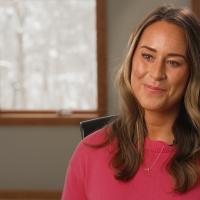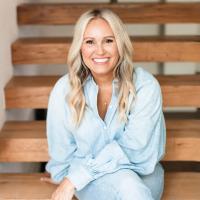Shedding Light on an Uncomfortable Piece of Richmond's History
Shockoe Bottom, along the James River, is one of Richmond Virginia’s oldest neighborhoods. It also lays claim to its darkest past. From 1830 to 1865, it served as one of the largest slave trading hubs in the south, second only to New Orleans. Over 300,000 people passed through here during a life in bondage. Virginia Delegate Delores L. McQuinn has been working to memorialize the pathway they walked through the port – where the atrocities of enslavement were hidden away from polite society.
“My first walk on the slave trail, I began to cry,” Delegate McQuinn shares. “What people who lived at a different era, but I was connected to by DNA, had to live through.”
The area contained numerous slave jails - holding pens for those waiting to be auctioned or carried away by their new owners. While the conditions in the jails were harsh, none compared to Lumpkin’s Jail, also known as “The Devil’s Half Acre.” Run by Robert Lumpkin, it was the jail where slave owners brought so-called “disobedient” or “troublesome” slaves to break them… through whatever brutal means necessary.
Delegate McQuinn says, “Based on what I have read, Robert Lumpkin was a mean man. Robert Lumpkin was an evil person.”
The slaves were crammed into small cells, shackled, and covered in filth and stench with no toilet facilities and little food or water. Some were beaten. It was especially torturous for slaves whose owners felt they needed to be punished. An 1856 biography of runaway slave, Anthony Burns, describes his time at Lumpkin’s.
As Dr. Raymond P. Hylton, Professor of History at Virginia Union University, explains, Lumpkin “cooped him up in the loft of the jail where the air was stale. He was shackled, it was filthy, he was given a starvation diet. He only got out in the open air once in a while to show him to people, to humiliate him. He was there for eight months.”
In the end though, Lumpkin’s Jail would no longer be a gateway into humiliation and slavery, but one where Black Americans would have access to a brighter future. It was after the Civil War. The newly ratified 13th Amendment ensured freedom to some 4 million enslaved people. At the forefront were the abolitionists, many of whom were Christians committed to living out the teachings of Jesus Christ.
“They took the Gospel seriously and said ‘Christ will make you free,’” explains Dr. Deborah Van Broekhaven, Executive Director Emerita of the American Baptist Historical Society. “And that stands for everybody. These people do deserve, not just freedom, but they deserve equality.”
And many believed equality would come through education. Generations of slaves had been forbidden to learn how to read or write.
Dr. John W. Kinney, Professor of Theology at Virginia Union University, states that at the time, “Education immediately becomes a threat to the hierarchy. Enlightenment becomes a threat, ‘Cause if I can keep you ignorant, I can keep you in your place.'”
While many started a campaign to provide the basics, other groups, such as the American Baptist Home Mission Society, had an even loftier vision – to empower Black Americans to become leaders in society, especially in churches, through higher education.
As Dr. Van Broekhaven explains, “Most people thought ‘Okay, vocational education was okay.’ But the idea of training these newly-freed people to be college professors, to be ministers, to head up seminaries, that was pretty radical.”
And dangerous. As schools began cropping up, teachers and students experienced violence, and some schools were burned or vandalized. Still, they were not alone.
Dr. Van Broekhaven continues, “Christians who had a heart for these people who had suffered, were willing to suffer alongside.”
One of them was a 70-year-old Baptist minister named Dr. Nathanial Colver. Sent by the American Baptist Home Mission Society, he came to Richmond in 1867 looking for a place to start a Black seminary. Finding a city tattered from the war, there were few options.
“Thirty blocks of Richmond had been destroyed,” says Dr. Hylton, “and most of what was left was in the hands of White southerners who were ‘unsympathetic’ to say the least. Dr. Colver apparently was praying on it a lot. And he met a group of congregants outside First African Baptist Church, told them of his plight. And a tall, fair-faced woman said that she had a place that he could rent very cheaply.”
Her name? Mary Ann Lumpkin – former slave and widow of notorious slave jailer Robert Lumpkin.
She was around eight years old when Lumpkin bought her, and she would bear him five children in their twenty-five years together, before he legally married her at the end of the war. Delegate McQuinn says, “She was in a constant mode of surviving. There was no power of her own. But she survived it.”
When Robert died in 1866, he left everything to Mary, including his infamous jail in Shockoe Bottom.
Dr. Hylton says, “That quickly turned to the idea of turning good into evil, turning ‘The Devil's Half Acre,’ into what was rechristened by Dr. Colver, ‘God's Half Acre.’”
In its three years there, the school, known then as the Colver Institute, would graduate some two hundred students: young men, born into slavery, seizing a more hopeful future for themselves.
Dr. Kinney says, “Authentic education thrusts you and calls you to a commitment to freedom and justice.”
It’s with that commitment the school moved forward into the future. It joined with another Black seminary to form Virginia Union University in 1899, not far from Lumpkin’s Jail. More than a century later, Virginia Union still stands, maintaining its tradition of excellence, while bringing up generations of leaders to continue the fight for equality for all Americans.
As for Lumpkin’s Jail, it was torn down in 1888, and its painful history was almost lost, until activists and archeologists excavated it in 2008. Delegate McQuinn is part of an effort to build a museum on the site.
She says, “If you talk about the journey of African Americans in America, many say, ‘Well, this is African American history.’ But this is American's history. We’ve got to tell the truth.”
Just as people of faith stepped in to address the evils of slavery, Dr. Kinney says Christians today must continue that legacy, reaching out with the love of Christ to end racism: “I will put my life, my status, and my privilege at risk for the sake of the truth that I recognize in God and the principles of the land I love require. That's for this nation to be healed.”



